How a failed nuclear experiment spawned neutrino astronomy
- Transfer
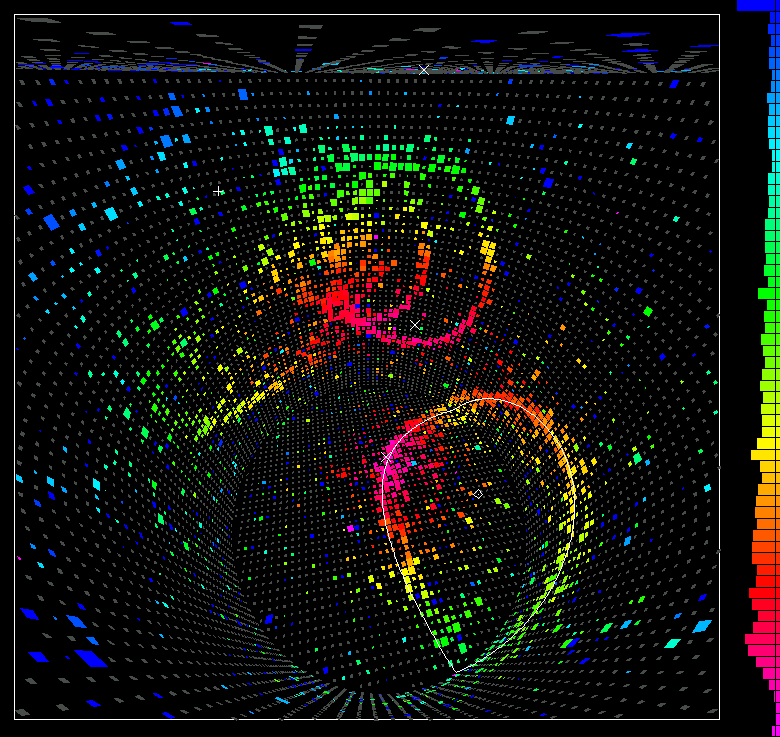
The presence of neutrinos can be recognized by the Cherenkov radiation rings appearing on vacuum tubes of photomultipliers located on the walls of the detector. This observation demonstrates the success of neutrino astronomy methodology. On this image you can see many events at once.
Sometimes even the best-designed experiments fail. The effect you are looking for may not occur, so you should always be prepared for a zero result. In such cases, the experiment is dismissed as unsuccessful, although without conducting it, you would never know about its results.
And yet sometimes the unit you have built may be sensitive to something completely different. Being engaged in science in a new way, with new sensitivity or under new, unique conditions, we often make the most unexpected and successful discoveries. In 1987, a failed experiment on the detection of proton decay for the first time discovered neutrinos, which came not only from our solar system, but also outside the Milky Way. So neutrino astronomy was born .

The transformation of a neutron into a proton, an electron, and an antielectronic neutrino — such a hypothesis put forward by Pauli to solve the problem of
Neutrino energy not conserved in beta decay — is one of the greatest success stories of theoretical physics. At the beginning of the 20th century, three types of radioactive decay were known:
- Alpha decay , in which a large atom emits a helium nucleus, and jumps over two elements down the periodic table.
- Beta decay , in which the atomic nucleus emits a high-energy electron, moving one element up through the periodic table.
- Gamma decay , in which the atomic nucleus emits an energy photon, remaining in its cell of the periodic table.
In any reaction according to the laws of physics, the initial energy and momentum of the reactants must coincide with the final energy and momentum of the reaction products. And in the case of alpha decay and gamma decay, it was. But during beta decay, this rule was not observed: energy was always lost.

The V-shaped trace, most likely, left a muon decaying into an electron and two neutrinos. The high-energy trace with a fracture indicates the disintegration of the particle in flight. Such a decay, if you do not include neutrinos, will violate the law of conservation of energy.
In 1930, Wolfgang Pauliproposed to introduce a new particle that will solve this problem: the neutrino. This small neutral particle can carry with it energy and momentum, but it will be extremely difficult to detect it. It does not absorb and does not emit light, and interacts only with the nuclei of atoms, moreover, it is extremely rare.
Having made this suggestion, Pauli felt unsure and joyful, but embarrassed. “I did something terrible, I declared the existence of a particle that could not be detected,” he announced. But, despite his excuses, the theory was confirmed experimentally.
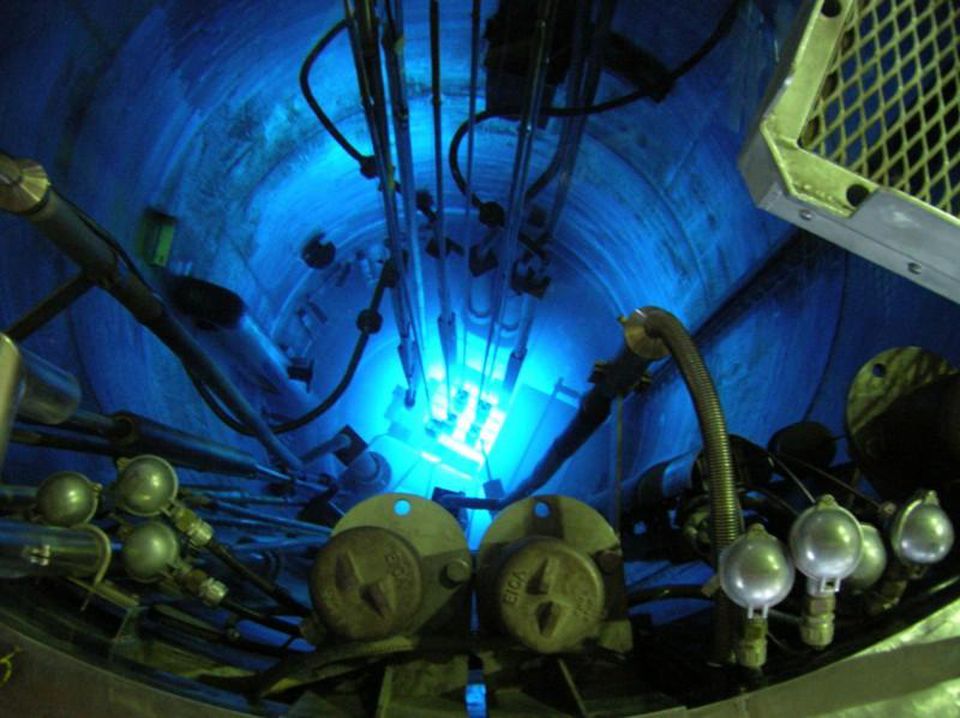
Experimental nuclear reactor RA-6 , demonstrating the characteristic Cherenkov radiationcaused by particles moving faster than light in water. Neutrinos (or, more precisely, antineutrinos), the hypothesis of the existence of which Pauli first put forward in 1930, were discovered in a similar nuclear reactor in 1956.
In 1956, neutrinos (or, more precisely, antineutrino) were first directly detected as products of the nuclear reactor. Neutrinos can interact with the atomic nucleus in two ways:
- they either scatter, bouncing around like a billiard ball crashing into a bunch of others,
- or cause the emission of new particles, with their energies and momenta.
In any case, you can build particle detectors where you expect interactions with neutrinos, and search for them. This is exactly how the first neutrinos were found: scientists built detectors sensitive to the presence of neutrinos at the edges of nuclear reactors. And if you recreate all the energy of the reaction products, including neutrinos, it turns out that the energy is still conserved.
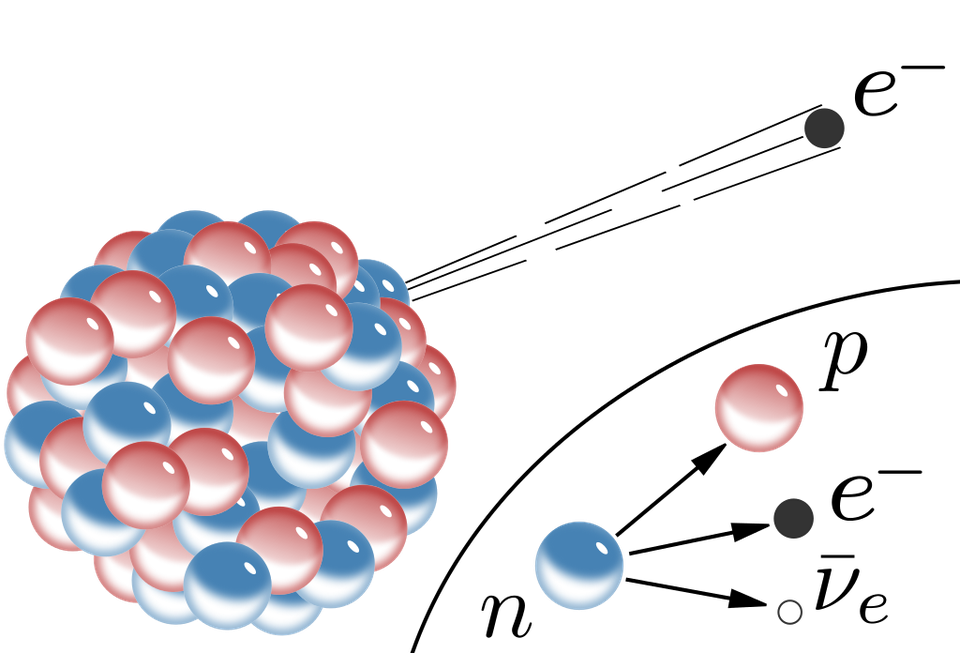
Schematic illustration of nuclear beta decay in a massive atomic nucleus. Only by taking into account the energy and momentum of the neutrino, one can satisfy the conservation laws.
In theory, neutrinos should appear in any nuclear reaction: in the Sun, in stars and supernovae, when high-energy cosmic rays collide with particles of the Earth’s atmosphere. By the 1960s, physicists had already created neutrino detectors in search of solar and atmospheric neutrinos.
These neutrino detectors contained a large amount of material with which neutrinos were supposed to interact. To shield the detectors from other particles, they were located deep underground: in mines. Only neutrinos should enter the mines; other particles must be absorbed by the Earth. By the end of the 1960s, solar and atmospheric neutrinos were successfully detected.
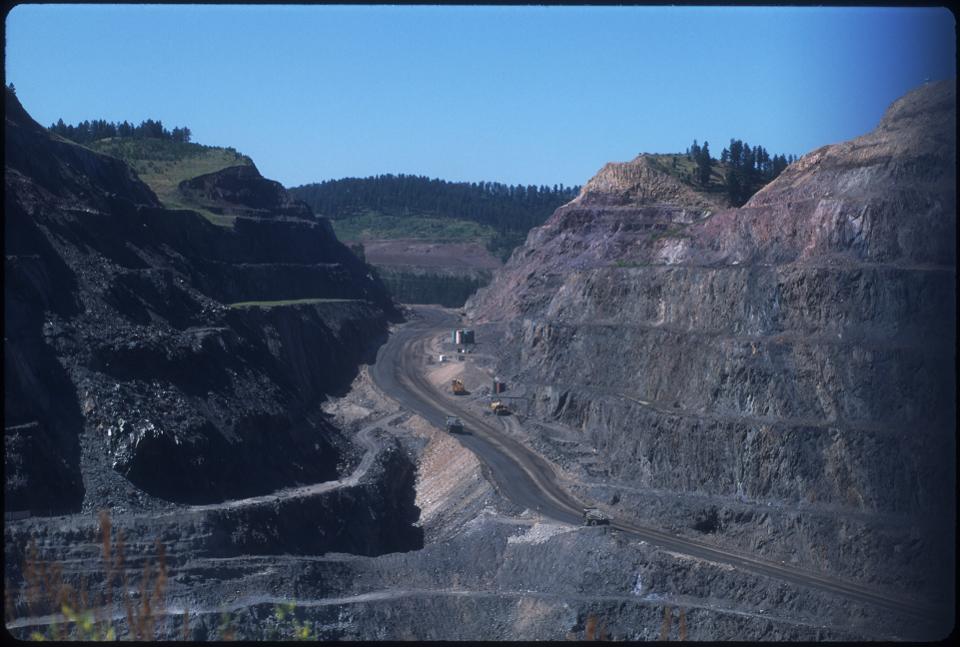
The Homestake Gold Mine bit into the mountains of Lid South Dakota. It opened more than 123 years ago, and produced more than 1,100 tons of gold from a depth of 2400 m. In 1968, the first neutrinos were discovered here, in an experiment developed by John Buckall and Ray Davis.
Particle detection technology developed for experiments with neutrinos and high-energy accelerators turned out to be suitable for another phenomenon: the search for proton decay. AlthoughThe standard model of particle physics predicts total proton stability; in many of its extensions — for example, in the Theories of Great Unification — the proton can decay into lighter particles.
Theoretically, when a proton decays, it should emit particles of small mass at high speeds. If one detects the energies and impulses of these rapidly moving particles, then one can recreate their total energy and see if it was a proton.

Particles with high energy can collide with others, causing showers of new particles that can be detected on the detector. Recreating energy, impulse and other properties of each of them, we can determine what exactly initially collided, and what appeared in this event
If protons decay, their lifetime should be extremely long. The universe itself is only 10 10 years old, but the proton lifetime should be much longer. But how much more? The key to the clue is that it is necessary to monitor not one proton, but a huge number of them. If the proton lifetime of 10 30 years, you can either take one proton and wait so long (a bad idea), or take a 10 30 protons and wait a year, watching to see if some of them collapsed.
A liter of water contains a little more than 10 25molecules, and in each molecule there are two hydrogen atoms: a proton with an electron in orbit. If the proton is unstable, then a sufficiently large tank of water with a large number of detectors around should help you either measure its stability / instability or limit it.
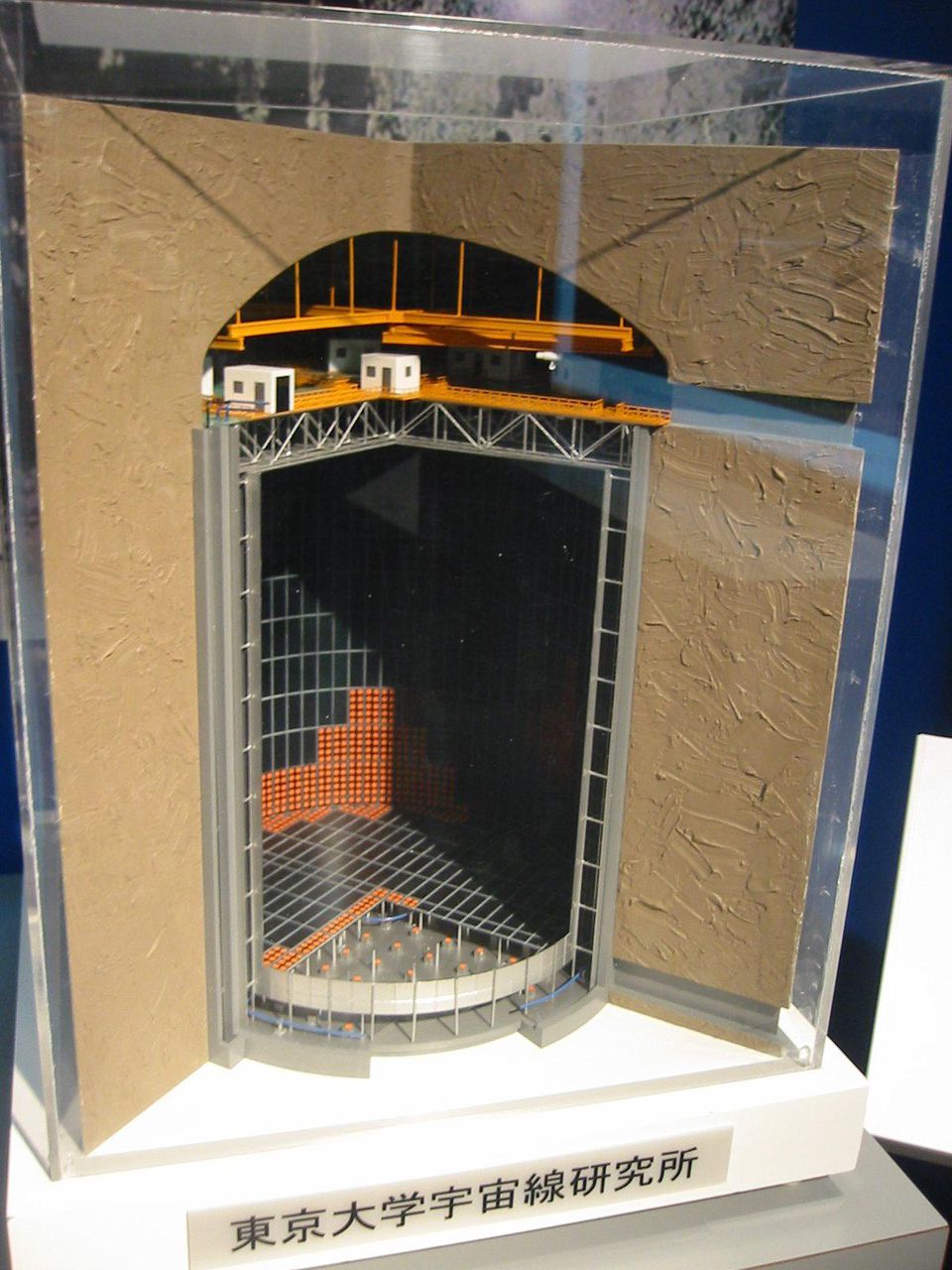
Scheme detector Kamiokande 1980s. The height of the tank is about 15 meters.
In Japan, in 1982 in the mines of Kamioka began construction of a large underground detector. He was named KamiokaNDE: Kamioka Nucleon Decay Experiment (an experiment on the decay of the Kamioka core). It was so large that it could hold more than 3000 tons of water and about 1000 detectors optimized to detect radiation emitted by a fast moving particle.
By 1987, the detector had been working for several years, without a single case of proton decay. The tank contained about 10 33 protons, and the zero result completely refuted the most popular theory among the theories of great unification. As far as we can judge, the proton does not decay. The main goal of Kamiokande was not achieved.
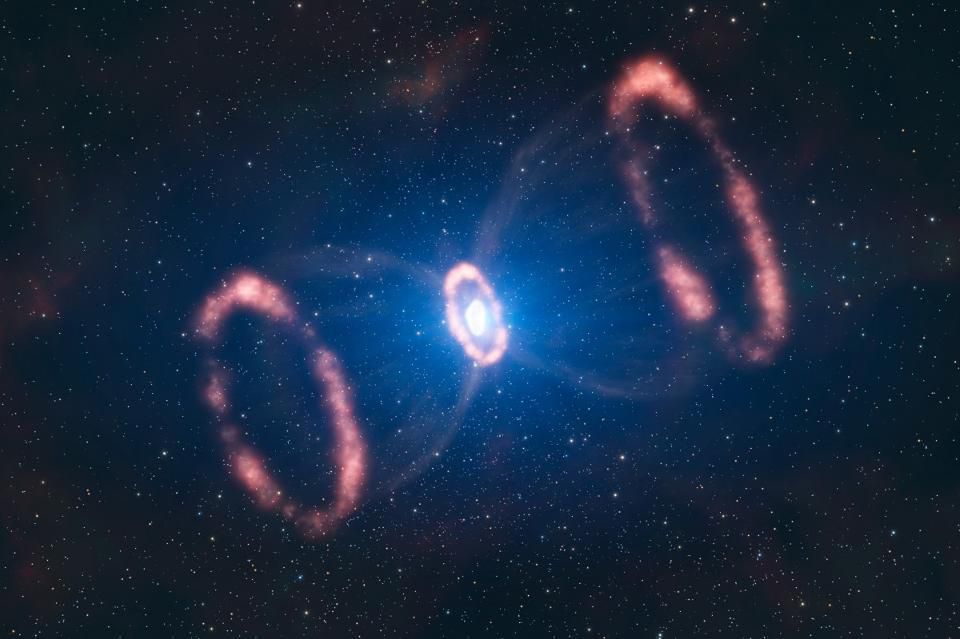
The supernova explosion enriches the surrounding interstellar medium with heavy elements. Outer rings appear from previous material, ejected long before the main explosion. The explosion also emits a huge variety of neutrinos, some of which reach the Earth.
But then something unexpected happened. Over 165,000 years earlier in the satellite galaxy of the Milky Way, a massive star reached the end of its life and exploded, spawning a supernova. February 23, 1987 this light first reached the Earth.
A few hours before the arrival of this light, something remarkable happened on Kamiokand: 12 neutrinos arrived there with a difference of 13 seconds. Two flashes - the first contained 9 neutrinos, the second 3 - showed that quite a lot of nuclear reactions occur in supernovae, generating neutrinos.
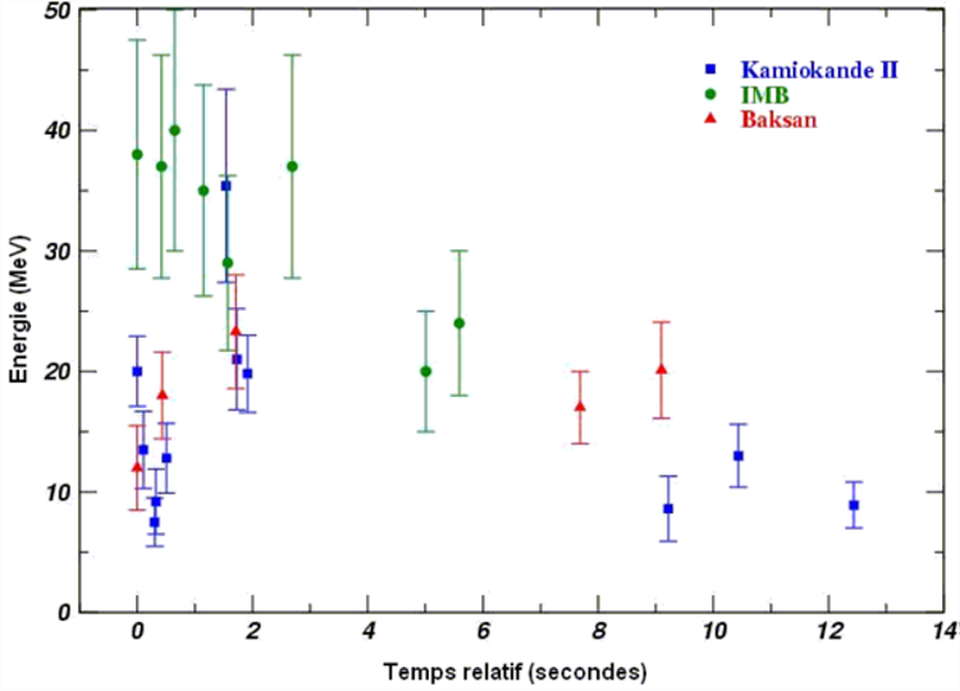
Three different detectors observed neutrinos from SN 1987A , and Kamiokande carried out the most reliable and successful observation. Transformation from a nucleon decay detector to a neutrino detector paved the way for the development of a science like neutrino astronomy
We first discovered neutrinos that came from outside the solar system. Started neutrino astronomy. For the next few days, light from this supernova, now known as SN 1987A, was observed over a huge range of wavelengths at many terrestrial and space observatories. Based on a tiny flight time difference between neutrinos and light, we learned that neutrinos:
- passed these 165,000 light years at a speed indistinguishable from the speed of light;
- that their mass cannot be greater than 1/30 000 of the electron mass;
- that neutrinos do not slow down during their journey from the core of a contracting star to its photosphere, as it does with light.
And even today, more than 30 years later, we can study the remnants of a supernova and see how it developed.
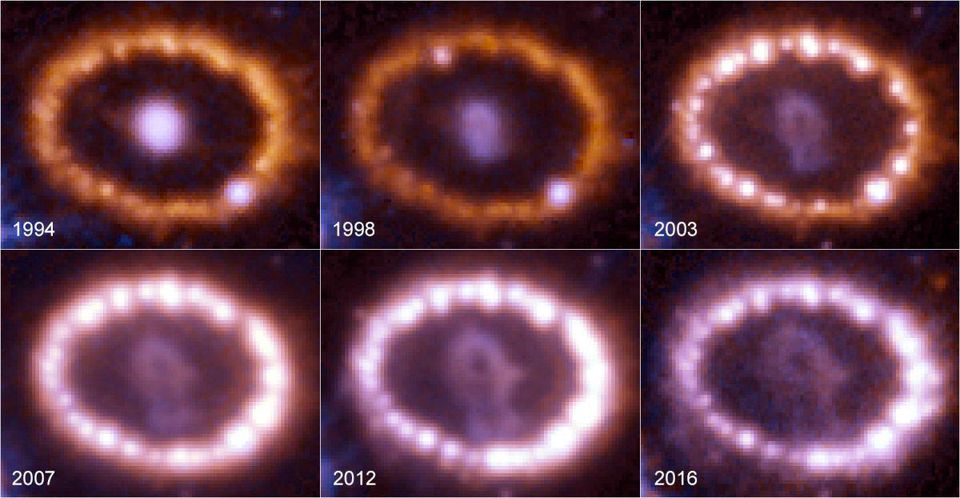
The outward-moving blast wave from the 1987 explosion continues to collide with the previously ejected material of a once-massive star, warming it up and highlighting it in the process. Many observatories continue to receive images of supernova remains today.
The scientific importance of this result cannot be overemphasized. He noted the birth of neutrino astronomy, just as the first detection of gravitational waves from the confluence of black holes marked the birth of gravitational-wave astronomy . Then multichannel astronomy was born., noting the first time, when the same object was observed both in the electromagnetic range (light) and by another method (neutrino).
He showed us the potential of using large underground tanks to detect cosmic events. And he makes us hope that someday we will be able to conduct a final observation: an event in which light, neutrinos and gravitational waves will come all together, and teach us all the principles of operation of objects of the Universe.
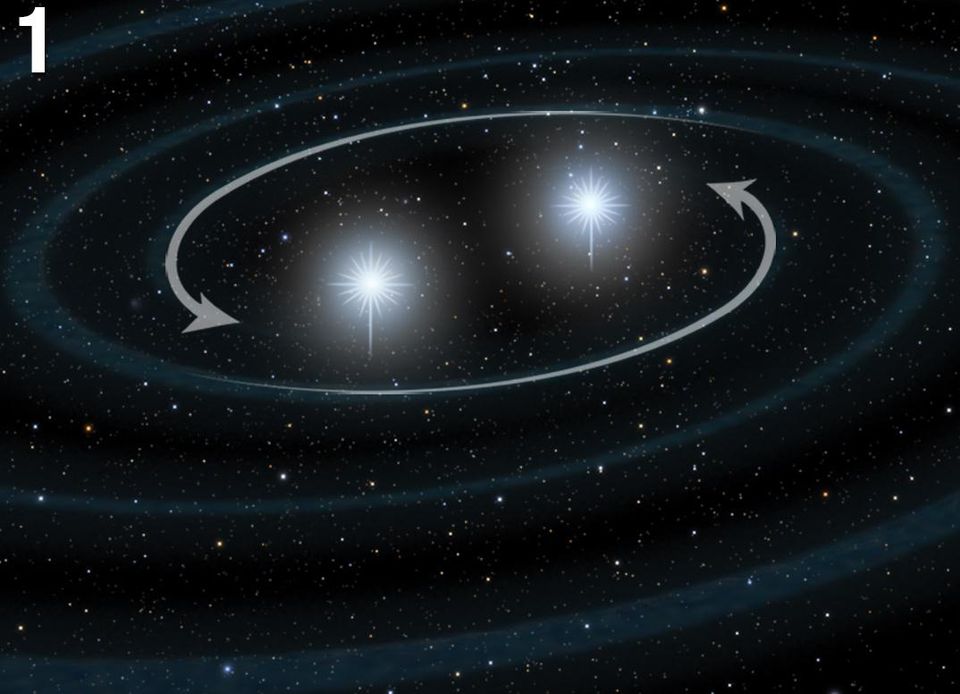
The final event of multichannel astronomy would be the merging of two white dwarfs or two neutron stars, which occurred not far from us. If such an event happens near the Earth, we can simultaneously detect neutrinos, light and gravitational waves.
And thanks to this result, the Kamiokande experiment was cleverly renamed. Since the Kamioka Nucleon Decay Experiment failed, KamiokaNDE was canceled. But the stunning neutrino observation from SN 1987A spawned a new observatory: KamiokaNDE, Kamioka Neutrino Detector Experiment (Kamiok's neutrino detection experiment)! And over the past 30 years, it has been updated many times, and several similar buildings have been built around the world.
If a supernova exploded today, in our Galaxy, we would be lucky to register up to 10,000 neutrinos arriving at our detector. All together, they would further limit the lifetime of the proton, which, as it is considered today, exceeds 10 35years - but we are not building them for that. After each high-energy cataclysm, neutrinos rush to scatter across the universe. And with working detectors, neutrino astronomy lives, feels good, and is ready for what space sends us.
